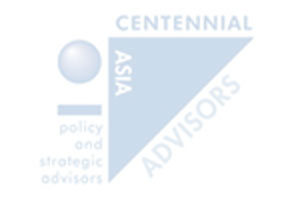Asian Insights
A summary of “Asian Insights” weekly update is published here. The full version is available through paid subscription. Please click here to register your interest. Our executive will get in touch with you.
14
Feb

What has changed?
Global economy: Key commodity prices are up because of political tensions and supply bottlenecks. Central banks, fearing unanchored inflationary expectations, might tighten monetary policy pre-emptively.
Asian economies:
- Chinese policy makers, now more worried about growth prospects, are likely to resort to innovative tools to stimulate the economy. That makes us more optimistic about growth this year but untested new tools could pose risks as well.
- India’s recovery lost steam recently but this is temporary. The central bank is likely to begin policy normalisation in April. Bank Indonesia, however, may hold off policy action. Similarly, we do not see the Philippines central bank normalising monetary policy just yet. There is more data to show Malaysia and Vietnam poised to deliver upside economic outcomes.
India: Looking Beyond Budget FY23
Now that the dust has settled on Budget 2022-23, it is timely to take stock of the broader implications of the budget statement. We outline 5 macro implications from Budget FY23.
- First, the increase in capex is less impressive after accounting for special factors. The assumption that massive public spending will crowd in private investments is questionable. In fact, rising global interest rates and a normalisation in household savings, alongside more government dissaving entail higher yields. Thus, the bond market is poised for indigestion, given the deluge of borrowings at a delicate time when financial conditions are tightening.
- Furthermore, the dearth of details on a credible fiscal consolidation plan raises the risk of
fiscal dominance by compromising the RBI’s reaction function. - Last, the reform agenda seems to have hit a wall, with little in the way of further tax reforms, measures to ease India’s inclusion in bond indices, and a fading drive.
Singapore Budget Preview: Pivoting away from crisis management
- The government has clearly signalled the likely revenue measures in the budget to be announced on 18 th February, so there will be few surprises there: The GST rate will be hiked from 7% to 9%, carbon prices will be raised in stages and a very modest form of wealth tax will be announced.
- The government will also offer substantial support measures to help the lower-income groups weather the impact of higher GST rates.
- But, given the policy makers’ determination to bring the budget back to balance, it will be a conservative budget with a slightly contractionary fiscal impulse. Given the strong growth prospects for the economy, that would be appropriate.
- It also appears to us that the government is keen to pivot away from two years of crisis management so as to focus more on structural challenges faced by the economy. More measures to help businesses to scale up and move up the value chain by adopting new technologies are likely as are schemes to to retrofit the city-state’s infrastructure for “greener” growth.

Highlights from the CAA Weekly Table:
Asian political risks:
- South Korea’s economy will slow only moderately despite higher covid-19 infections causing stricter social distancing rules. For 2022 as a whole, domestic demand will recover.
- In India, although PMI surveys showed some deceleration in the economic recovery, other indicators such as non-food credit look robust.
- Indonesian inflation risks are up due to robust domestic demand and the VAT rate hike.
- In Malaysia, export growth is holding up despite some moderation. Inflation remains benign allowing the central bank to raise rates later than others.
- Despite a weaker PMI, the Philippines should see a rebound later this year.
- Domestic demand is beginning to look more promising in Thailand. External demand and a return of tourists should help its economy – but watch rising political risks
What does the global economy hold in store for Asian economies?
Three themes emerge from surveys and economic data for January:
- Resurgent covid-19 infections have slowed the global recovery but there are also clear signs of resilience and optimism about the future.
- Adjustments being made by the corporate sector and policy makers suggest that this optimism for global growth and inflation is well founded.
- Expect global demand to continue boosting Asian economies after a modest hiccup in the first quarter. But there will be greater divergences in performance within Asia and the risk of renewed trade aggression should not be under-estimated.
China: CNY to out-perform despite Fed and PBOC’s divergent stances
Barring an abrupt outflow of capital, the evolution of the major components of Broad Balance of Payments suggest another year of Chinese Yuan (CNY) outperformance versus regional currencies, which are generally primed to weaken in response to a hawkish Fed.
- First, the trade surplus will grow in China’s favour given the likelihood of weak domestic
demand in China contrasted against a recovery in consumer demand in China’s trading partners, especially the G3 developed economies. - Second, capital inflows will also favour the CNY. Foreign direct investment has been strong
and will remain so, boosted particularly by China’s liberalisation of its services sector which is attracting foreign capital. - Third, a major driver of portfolio flows will be expectations in the FX market of the CNY. The dominant factor shaping these expectations will be what the policy makers want vis-à-vis the CNY: we think they will want a strong CNY to cap imported inflationary pressures.
- A key risk to our view, however, is capital outflows sparked off by other considerations. The
Chinese authorities’ radical changes in regulation of big tech and the indicated shift in the political economy towards less tolerance of big capital could unnerve Chinese entrepreneurs and cause them to shift funds abroad.
